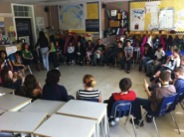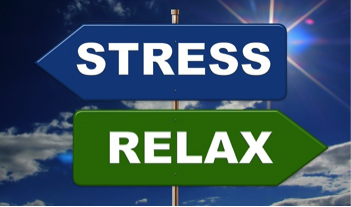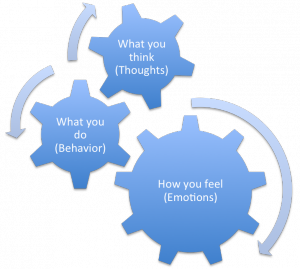Restorative Approach in Schools

As teachers (and administrators), we know that a safe and orderly educational environment is vital to effectively and efficiently deliver high-quality instruction. Students who display problem behavior, break rules or commit serious school offenses, can disrupt this environment and jeopardize the safety and learning of other students. Punishments such as removal from class, and in and out of school suspensions are often believed necessary to maintain school safety, serve as a deterrent to other students, and to teach students a lesson. It may seem intuitive to simply remove a “problem student” yet, researchers explain that exclusionary punishment is associated with increased drop out rates, decreased academic achievement, poor school climate, and increased juvenile delinquency.
In fact, the American Bar Association, the American Academy of Pediatrics, and the American Psychological Association have all issued statements opposing “zero-tolerance policies” and called on states and school districts to develop alternatives to exclusionary discipline practices. One alternative is a restorative approach to discipline, also known as restorative discipline or restorative practices (RP).
What is a Restorative Approach?
At its core, the restorative approach is a philosophical shift away from the traditional, punitive approach to wrongdoing. The restorative perspective views misbehavior as an offense against relationships. This approach maintains a focus on accountability of actions with a specific emphasis on empathy and repairing of harm. To that end, RP seek to address underlying issues of misbehavior and reintegrate wrongdoers back into the school and classroom community.
| Traditional/ Punitive Approach | Restorative Approach |
| What rule was broken? | Who has been hurt/what relationship was damaged? |
| Who broke the rule? | What are the needs of those harmed and what parties have a stake? |
| What do they deserve/how will they be punished? | What stakeholders will be involved and what process will put things right again? |
What Does a Restorative Approach Look Like in School?
Restorative practices are a framework and set of practices used for the prevention of rule breaking and as an intervention after a rule is broken. They can be informally infused in classrooms or formally and systematically implemented school wide. At the classroom level teachers can focus on building a sense of community and fostering relationships to develop a shared sense of responsibility for the well-being of each group member. Implementation of school-wide RP require expertise and consultation from trained professionals.
Proactive Practices in the Classroom

- “Fair processes” such as establishing classroom rules and expectations as a group to engage in shared decision-making.
- Teach, model and practice “affective statements/questions” that explain/ask how others are impacted by the positive or negative behavior of an individual.
- Through the use of “proactive or responsive circles” in which the class comes together in a circle to discuss topics of concerns or problem solve. An example of an elementary classroom circle can be viewed here.
- Inform parents and communicate with school staff the restorative approach to promote generalization.
- The use of “student-led conferences” to discuss academic and social progress.
Intervention Practices-School wide
- Peer Mediation/Juries/Courts- student-centered programs that hear “cases” on rule breaking or offenses
- Restorative/Family Conferences-all stakeholders come together, including the one who committed the harm, to discuss the offense and the feelings of those involved, how to make things right and how to prevent a similar situation in the future. Depending on the severity of the offense, a trained facilitator may be required.
- Restitution Planning/Restorative Agreements-a plan of action to repair or “put right” the offense
- Reintegration Following Exclusion-holding a restorative meeting circle with all involved parties (parents, administrators, teachers, the party harmed and one who committed the harm) to reintegrate the offender back in to the school community. This also may require a trained facilitator.
Is This Just Another Program? Won’t This Interfere In What We Are Already Using?
Proponents of RP suggest these practices can stand-alone or be imbedded within existing programs. Within a multi-tiered systems of support (MTSS) framework, relationship and community building would be primary supports, responsive circles and peer juries/mediation as secondary supports and restorative/family conferences incorporated as tertiary supports.
Are Schools Really Using This And Does It Work?
- Worldwide, RP is being implemented in New Zealand, Canada, Australia and the UK
- In the US, RP is being implemented in schools in Philadelphia, Minnesota, Chicago, Oakland, Baltimore, Portland, Denver, and San Francisco.
- Schools report that RP are effective in reducing suspensions, office referrals, disruptive behavior, detentions, and bullying while also improving school climate and teacher-student relationships
- Additional information on RP effectiveness can be found here – 1, 2 and 3
How Can I Find Out More About RP?
- International Institute for Restorative Practices (IIRP)- trainings, research, news and conference information
- SaferSanerSchools– offers trainings for whole school adoption of RP
- The Umoja Corporation and Alternatives, Inc. both provide technical assistance and training for RP
- The NEA, AFT, National Opportunity to Learn Campaign, and the Advancement Project offer a Restorative Practice Teacher Guide
RP is not a one-size-fits-all approach and realistically some students may refuse to participate. RP can be available as a continuum of options to address problem behavior or school offenses. Just as instruction is differentiated, practitioners should differentiate discipline to meet the needs of all of our students.
Adapted from:
Wachtel, Joshua. “Restorative Practices: Building a Connected Community of Learners – Restorative Works Learning Network.” Restorative Works Learning Network. February 18, 2014. Accessed March 08, 2016.



 For many years, our research team has worked with a variety of teachers and students with a wide range of behavioral needs and what we have seen over and over again is that when teachers use cognitive-behavioral strategies in their classroom, the effects on student behavior have been positive. Cognitive-behavioral interventions (CBIs) are becoming recognized as a viable, research-based approach appropriate for use in school settings.
For many years, our research team has worked with a variety of teachers and students with a wide range of behavioral needs and what we have seen over and over again is that when teachers use cognitive-behavioral strategies in their classroom, the effects on student behavior have been positive. Cognitive-behavioral interventions (CBIs) are becoming recognized as a viable, research-based approach appropriate for use in school settings. 




